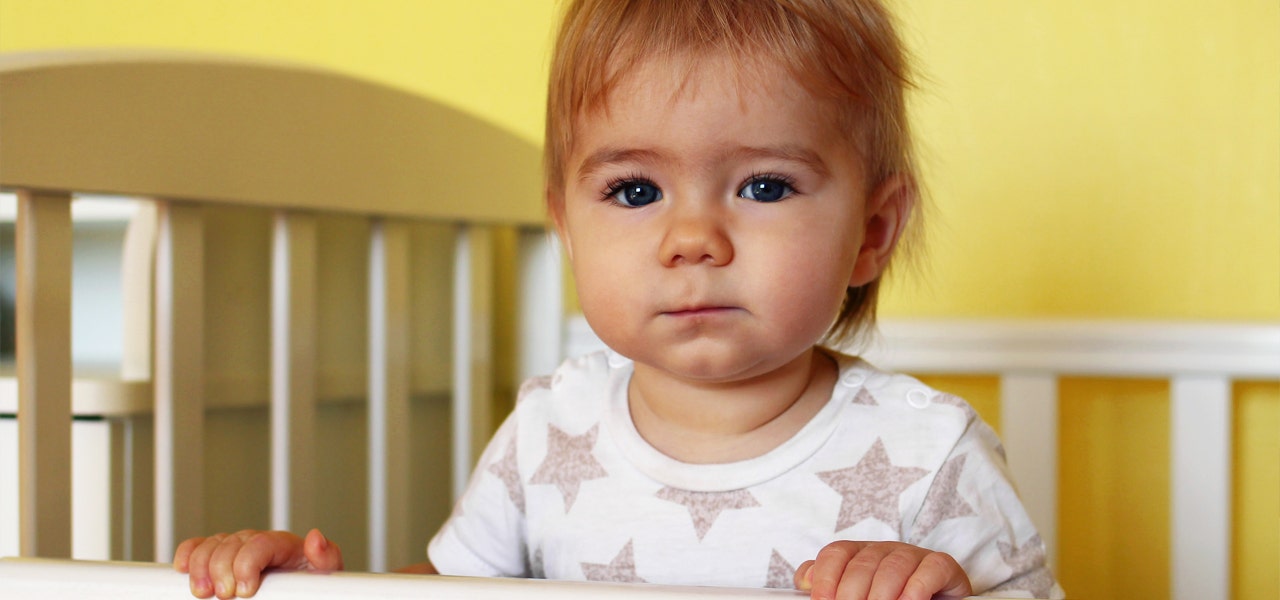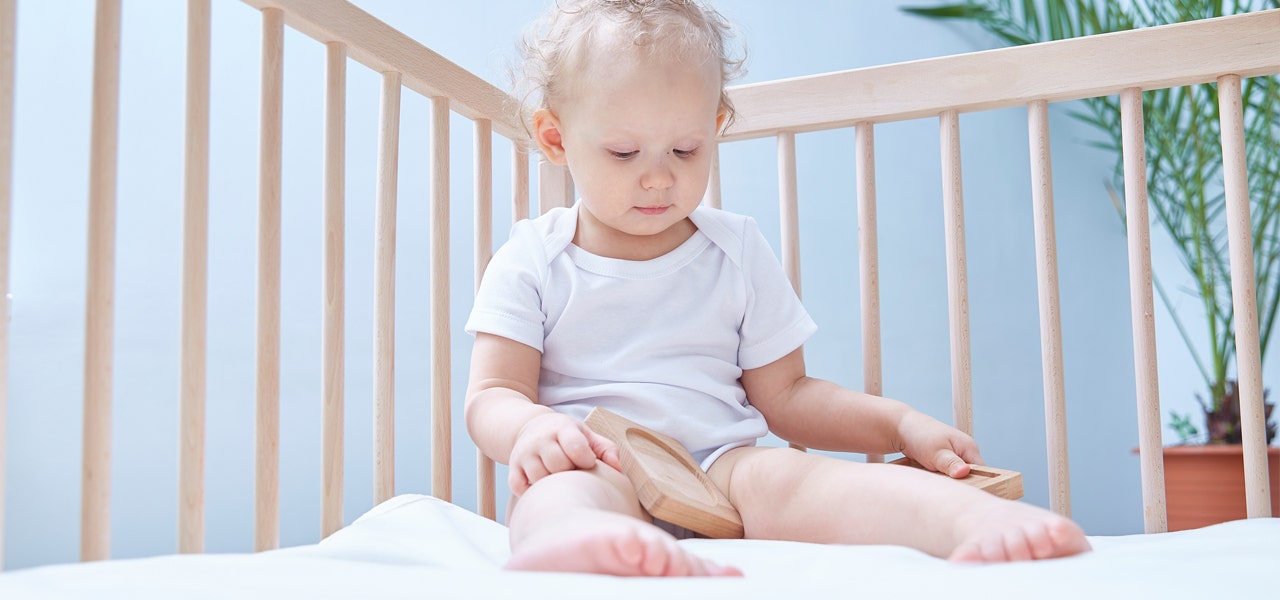Your child’s first birthday isn’t an arbitrary milestone. So much is happening right now!
Walking, talking and teething, your little baby is becoming a little person – and it’s a wonderful thing to watch.
But, of course, with every developmental milestone there are as many challenges as there are celebrations. You may notice at or around this time that your one-year-old won’t fall asleep or stay asleep as well as they used to. This is called the 12-month sleep regression, and though it may sound scary, if you have a one-year-old you’ve probably experienced sleep regression before – and you probably will again.
We’ve created the complete guide to the 12-month-old sleep regression, to ease your worries and get your little one back to sleeping healthily in no time.
What Is the 12-Month Sleep Regression?
The 12-month sleep regression is exactly what it claims to be: a setback in your child’s sleep habits at or around the one-year mark. After months of sleeping soundly, this sleep regression may seem to appear out of nowhere. However, it’s likely connected to the exact thing you’re celebrating with your child’s first birthday – all the new skills they’re developing!
Your new toddler now spends their days learning how to maneuver their body in different ways or learning how to talk. The excitement of these discoveries may leave your little one feeling restless and overstimulated – and wanting to practice these new feats at all hours of the night.


Your one-year-old is also developing cognitively, which means they might throw a tantrum to protest their bedtime and exercise their newfound sense of independence. Or they might start to feel some separation anxiety when they wake up at night and you’re not there. They may even experience their very first nightmares.
And we can’t forget the fact that as any infant grows, they begin to sleep for longer periods of time and for less overall time throughout the day. A greater proportion of your toddler’s total sleep happens at night now, even though they continue napping during the day. With changing sleep needs comes changing sleep schedules, with changing sleep schedules comes changing routines, and with any change at all comes an adjustment period – ergo the one-year sleep regression.
Common Signs Your Baby Is Regressing
Every toddler is different, and the 12-month sleep regression may look different from one little one to another. Here are some common signs to look out for that could indicate your brand-new toddler is dealing with the one-year sleep regression:
- Trouble falling asleep
- Frequent nighttime wakeups
- Fussiness and trouble calming down after nighttime wakeups
- Taking longer naps during the day
Potential Causes of the 12-Month Sleep Regression
Your little one is going through some really big changes right now – talking, walking,
teething, etc. It’s hard to pin down one cause of the 12-month sleep regression, because any number of these changes can be contributing factors.
Let’s review the developmental changes or circumstances that may affect your little one’s sleeping habits:
- Restlessness and overstimulation related to new skills such as walking and talking
- Separation anxiety that comes with heightened emotional and social development
- Teething and associated pain and discomfort
- New sleep patterns, schedules or sleep training associated with needing less sleep than they did in infancy
- Nightmares that can begin as early as this for some children


How Long Does a Sleep Regression Last?
In most cases, the symptoms of a 12-month sleep regression don’t last longer than 1-2 weeks. But don’t forget that every child’s situation is different! The length of a sleep regression is influenced by the one-year-old’s sleep habits, environment and their overall development.
Unfortunately, the end of a 12-month sleep regression doesn’t always mean the end of all sleeping problems. Like adults, babies and toddlers can go through good and bad periods in their sleep. However, encouraging healthy sleep habits at a young age can help to reduce the chances of sleep issues throughout development and later in life.
A 12-month sleep regression most likely doesn’t warrant an immediate call to your pediatrician, but it might be worth mentioning at your baby’s next checkup if it’s troubling you. And if you notice that it doesn’t resolve itself after a couple weeks, it might be time to ask your doctor for help getting your little one back on track.
3 Tips for Getting Back on Track
Encouraging healthy sleep habits is key to avoiding sleep problems throughout development – and they are your best tools for beating the 12-month sleep regression. Here are a few healthy sleep tips to help you out when your one-year-old won’t sleep.
1. Be Consistent
Keep a steady sleep schedule. Same wake-up call, same nap time, same bedtime every day. If you can stick to a consistent schedule for naps and sleep at night, it can help your little one’s body learn to adjust and be ready for sleep when it’s time.
A great way to help your toddler’s body get ready for sleep is to build a consistent routine before bedtime. Give your child time to wind down, get comfortable and say goodnight – a bath, some cuddles and a bedtime story, perhaps. Just keep the routine stable. By the way, this helps you, too, parents!
2. Keep Active
Filling your toddler’s daytime with activity is a great way to promote sleeping at night. You should find activities that stimulate your child’s body and brain to help wear them out and get them ready for that period of rest and recovery while they sleep.
Giving your child plenty of daytime activity, especially if it involves exposure to natural light, can also help foster a healthy circadian rhythm that reinforces sleeping during the night.
3. Create the Right Environment


Your child’s sleep environment can play a huge role in their quality of sleep. Eliminate barriers to sleep such as excess noise, light or stimulation that can make it hard for your one-year-old to fall asleep, stay asleep or self-soothe during the night.
At Naturepedic, we believe that one key to a safer, healthier sleep environment is safer, healthier bedding – free of questionable materials and chemicals. Find out more about our range of organic crib mattresses, crib sheets and protector pads.
 BABY
BABY  KIDS
KIDS  ADULT
ADULT  LEARN
LEARN  STORES
STORES 